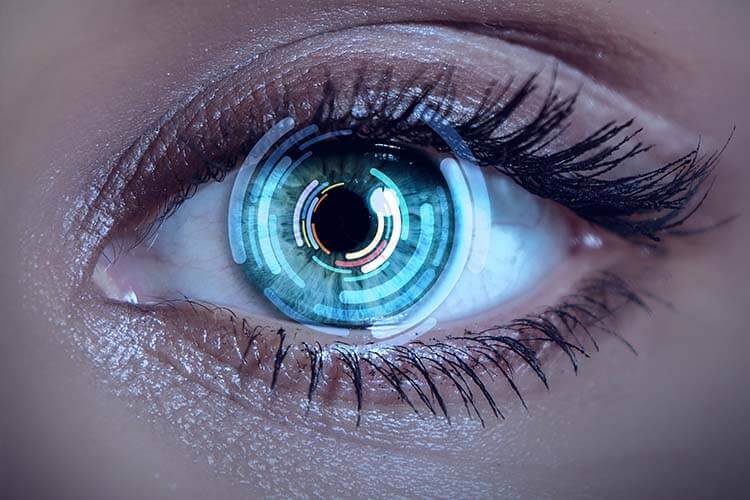No-Touch PRK Laser Eye Surgery in Türkiye!
No-Touch PRK Laser Eye Surgery: The Flapless Revolution
In the world of ophthalmology, advancements are always on the horizon, making procedures safer, more efficient, and less invasive. One such advancement that has been creating waves is the No-Touch PRK (Photorefractive Keratectomy) Laser Eye Surgery. For those unfamiliar with this breakthrough, it's time to delve into what No-Touch PRK is and why it's gaining popularity.
What is No-Touch PRK Laser Eye Surgery?
Photorefractive Keratectomy, commonly referred to as PRK, is a type of refractive laser eye surgery used to correct myopia (nearsightedness), hyperopia (farsightedness), and astigmatism. The "No-Touch" variant of this procedure is distinguished by its flapless approach.
Unlike traditional LASIK surgery, where a flap is created in the cornea, No-Touch PRK involves the removal of the epithelial layer (the cornea's outermost layer) using a laser or a liquid solution. This means there are no incisions and no physical instruments touching the eye, making the entire process less invasive.
Benefits of No-Touch PRK Laser Eye Surgery
- Safety: Since the procedure is flapless, patients don't need to worry about flap-related complications, such as flap displacement or infections beneath the flap.
- Precision: Using a laser to remove the epithelial layer ensures a high degree of accuracy, promoting better healing and outcomes.
- Less Invasive: No physical instruments come into contact with the eye during the procedure, minimizing the risk of infections and trauma.
- Broader Candidacy: Patients who were previously considered unsuitable for LASIK due to thin corneas might be suitable candidates for No-Touch PRK.
Understanding the Procedure
- Anesthetic Drops: The procedure begins with the application of anesthetic eye drops to numb the eye and ensure the patient's comfort.
- Epithelial Layer Removal: Using either a specialized laser or a liquid solution, the epithelial layer of the cornea is gently removed.
- Corneal Reshaping: The exposed corneal tissue is then reshaped using an excimer laser, correcting the refractive error.
- Healing: A soft contact lens is placed over the eye, acting as a bandage to facilitate healing. This is typically worn for a few days, during which the epithelial layer regenerates.
Aftercare and Recovery
While the No-Touch PRK procedure boasts numerous benefits, it's essential to note that the healing process can be slightly longer compared to traditional LASIK. Patients might experience some discomfort, haziness, or blurry vision in the initial days post-surgery. However, with time and proper aftercare, these symptoms diminish, paving the way for clearer vision.
While both are refractive surgeries aiming to correct vision, the key difference is that traditional LASIK involves creating a flap in the cornea, whereas No-Touch PRK is flapless. The outermost layer of the cornea (epithelium) is removed in PRK instead of creating a flap.
The eye is numbed using anesthetic drops before the procedure, ensuring minimal discomfort for the patient. Some patients might experience slight discomfort or a gritty sensation in the eye during the initial days of recovery, but this typically subsides as the eye heals.
While the procedure itself is swift, the healing process can take a bit longer than traditional LASIK. The epithelial layer, once removed, regenerates over a few days. Patients might experience blurry vision or haziness during this period, but it generally improves within a week.
As with any surgical procedure, there are potential risks, though they are minimal. Some patients might experience prolonged healing, infection, or scarring. However, the flapless nature of the procedure eliminates risks associated with flap complications.
Individuals with stable vision prescriptions, who might not be suitable candidates for LASIK due to thin corneas, could benefit from No-Touch PRK. However, it's crucial to consult with an ophthalmologist to determine the best refractive surgery option for your specific needs.
For most patients, the vision correction achieved with No-Touch PRK is permanent. However, natural changes in the eye due to aging can still occur, which might require glasses or additional treatments in the future.
Many patients achieve 20/20 vision post-surgery and no longer need glasses or contacts for most activities. However, some might still need them for specific tasks, like reading, especially as they age.
Many patients can return to work within a few days post-surgery, but it varies based on individual healing rates and the nature of their job. It's always best to consult with your doctor about the recommended recovery timeline.

